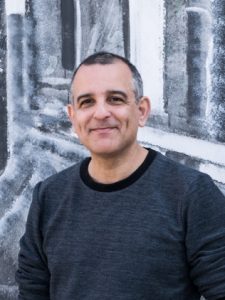Breaking the Net

What do Facebook and Twitter have to do with fighting terror or curing epidemic diseases?
Prof. Amir Leshem presents: the study of social media and its unexpected contexts
Prof. Amir Leshem has spent the past year delving into facebook, twitter, and other social networks. No, he has not neglected his academic research for recreational pastime. In fact, Leshem, who is an expert on communication networks, signal and data processing, is working – he is currently studying the dynamics of social networks, and their implications on other realms – from genetic research to fighting terror. “Using a well established sociological model for opinion dissemination in social networks. My team and I are trying to identify the influencing factors in social media, and their level of influence,” Leshem explains. “From a marketing perspective, identifying the influential factors will enable advertisers to target them as opinion leaders in their circles. But our findings can also advance the war on terrorism. In the US for instance, there are hundreds of websites preaching to an extremist Islamic ideology. Shutting down just one of these websites requires a special court order and lengthy, expensive legal proceedings. If we were able to identify which of these websites is the real influencer, motivating people to take radical action, we’ll know which websites to focus on eliminating.
To understand the mechanism behind influential data on social networks, Leshem and his colleagues Prof. Anna Scaglione of Arizona State University and her doctoral candidate Wai Hoi-To, decided to use a theoretical model to place agents in social networks, and then analyze their ability to shift the status quo. Such information will enable the researchers to retrace the mutual influence of other social network users. “We are studying discussions on various subjects, gathering information, deducting how the information spreads, and identifying the debaters’ positions. Then, based on the data we gathered, we distribute our own information, follow its dispersion patterns, and examine whether it has achieved its purpose.
This enables us to create a mathematical model illustrating the influence levels of different network members, including mapping of network friendships. Of course we take under consideration the fact that we may have many online friends, but only very few can actually influence us. The real, core network is sparse. We refer to this method as Active Sensing or Social Radar. We have recently developed a surprising new model, proving that random factors can change and even reverse the opinion of the masses. This is a new model offering novel mechanisms of the bandwagon effect in economics and politics. The simple model illustrates how the predictions of the spread of opinions is much more complex then the classical social studies models allow for, and that the bandwagon effect can erupt spontaneously and not as a result of dispersing misinformation.”
Next, Leshem and his colleagues attempted to revert the effects and identify the persistent agents – those attempting to spread information and are unaffected by others. “Our goal is to identify and locate misinforming agents – fake news – with an agenda. Sometimes it’s relatively easy, but other times it’s complicated and even dangerous. The significance of this information is immesurable. For instance, if I have a computer network and someone tries to take control of the network intersection in charge of performing calculations, feeding it with fake information, it might affect the entire system and impair the whole network. A similar method may help identify attacks on electric networks.”
The preliminary results of this research seem promising. This past year the researchers have published a number of related articles in prestigious journals and presented their work in leading signal processing, decision making and network science conferences. Their models are applicable to a range of disciplines: “The bottom line is we are taking this nonlinear network dynamics and attempting to understand the network’s structure, using dynamic models. Aside from the obvious social networks application or the identification of hostile agents infiltrating distributed computing networks, this method can also be used on biological research. For instance, working with Dr. Baruch Barzel of BIU’s Department of Mathematics, our team recently succeeded in applying the nonlinear dynamics approach for the identification of reciprocal influence among genes in genetic regulation networks. For years now, bioinformatics biologists have been looking for methods of calculating the reciprocal influence of genes (in bacteria, in complex organisms, and even in humans). Our development achieves the best results to date. Our model has been evaluated against other network methods, E. Coli and yeast, and has produced far better results.”
Now, Leshem and his colleagues are trying to implement these new techniques for other purposes. In addition to studying the influence hierarchy in social networks, they are also interested in studying the dynamics of data distribution in networks. The idea is to use the information about the dispersal of a phenomenon online, and study the dynamic model creating this data. It can be information about the spread of endemic diseases such as the flue or Ebola – one casual encounter with a carrier can suffice to contract the disease. The pattern is very similar to the spreading of ideas in social networks – you can only “infected” by ideas and positions of someone you were exposed to. In the case of diseases spreading, more factors should be weighed, some more predictable than others, such as airline networks. But in this case, just like in the case of social networks, it’s all about a networks of connections and dynamics that need to be deciphered. A successful outcome of this project will help us quantify the dynamics of the spread of opinions and develop models that are exceedingly more precise then those previously used.”
Last Updated Date : 04/12/2022



